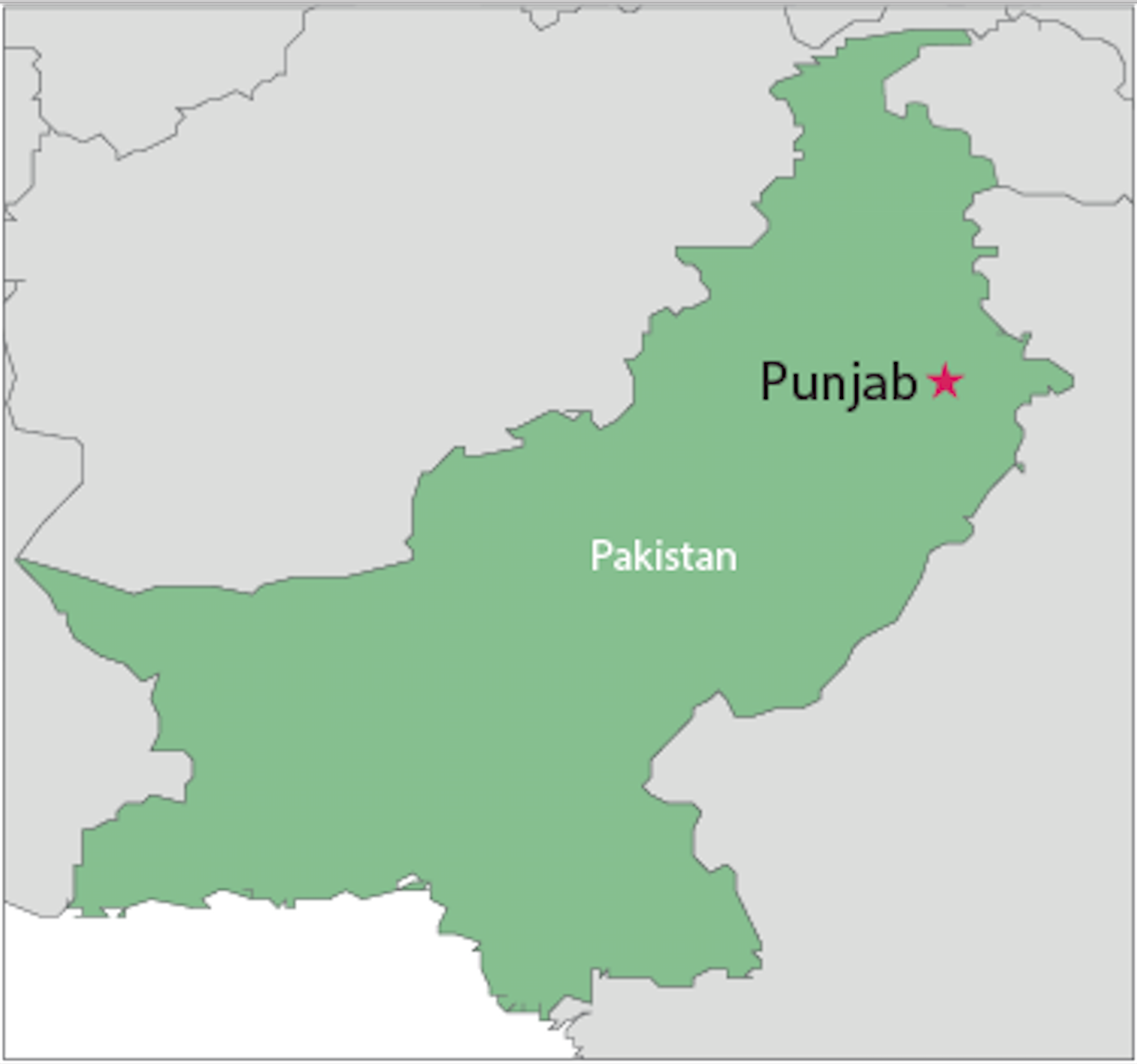Pakistan
Overview of Initiative
The province of Punjab, Pakistan, is consistently met with challenges for agricultural productivity. A harsh climate with warm temperatures and dry conditions will only be worsened in the coming future. Climate change impacts could exacerbate conditions by making the seasonal monsoon and the timing of crop planting more difficult to discern – increasing seasonal inconsistency and poverty. Assessing adaptation policies and practices that will lead to a better understanding of the best future practices for agriculture in Punjab, Pakistan is essential.
During Phase 2 (2015-2017), the Pakistan team applied significant focus and emphasis on model calibration and analysis. The team utilized crop models DSSAT and APSI, and calibrated and validated these models for rice, wheat, and cotton. Through this process, scientists were able to inter-compare the results for model improvement. These updated crop models allowed site-specific production technologies and adaptation packages for climate change to be developed.
The team, including their stakeholder liaison, directed considerable attention to their engagement and outreach activities. Outreach included speaking about climate change awareness and results dissemination to stakeholders. Engagement incorporated a much larger assortment of methods such as workshops, webinars, seminars, use of Information Technology tools, symposiums, consultative sessions, field days, field visits, hands-on training, and demonstration plots.
Through these interactions, the research team developed regional level Representative Agricultural Pathways (RAPs) to help plan adaptation interventions. Policy makers can use RAPs and adaptation package information to understand how certain decisions may impact agricultural productivity in the future. This information was especially valuable to stakeholders, as the Pakistan team continued to revise their research approach and outputs to ensure the needs of their stakeholders were met.
Click here to learn more about AgMIP Pakistan.


Impacts Explorer – South Punjab, Pakistan
Small, medium and large irrigated farms growing cotton and wheat
View the Regional Summary for South Punjab, Pakistan here.
View the Spatial Dashboard for South Punjab, Pakistan here.


Pakistan Team members
Ashfaq Ahmad: PI
Muhammad Ashfaq: Socio-economics
Ghulam Rasul: Crop modeling
Syed Aftab Wajid: Crop modeling
Tasneem Khaliq: Crop modeling
Shakeel Ahmad: Crop modeling
Ahsan Raza Sattar: Information Technology
Farah Riaz: Stakeholder liaison
Fahd Rasul: Remote Sensing
Ahsan Bukhari: Climate Change
Syed Asif Ali Naqvi: Economics
Jamshad Hussain: Crop Modelling
Sohail Akhtar: Sociologist
Sajjad Ahmad Baig: Economics
Ishfaq Ahmad: Crop Modelling
Sadia Akhtar Awan: Economics
Shumaila Tufail: Crop Modeling
Asad Ullah: Agri. Engineering
Sana Rasul: Climate Change
Gerrit Hoogenboom: ARP
Research Summary:
SOUTH PUNJAB, PAKISTAN
Crops: Cotton and wheat
Models: DSSAT, APSIM, and LivSim
Farm System: Yes
Economic Strata: Large area farms, small and medium area farms
Possible Adaptation: Production technologies (e.g. Planting time, methods & density, cultivars, fertilizer, irrigation, etc.); Alternate crops
CENTRAL PUNJAB, PAKISTAN
Crops: Rice and wheat
Models: DSSAT and APSIM
Farm System: Yes
Economic Strata: Large area, small and medium farms; strata: 5
Possible Adaptation: Adaptation packages
KEY PARTICIPATING INSTITUTIONS
Pakistan Meteorological Department
University of Agriculture, FaisalabadÂ
PMAS-Arid Agriculture University
University of Florida
